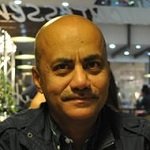Cities are like mothers, with unlimited capacity and open pace for love, and Karachi is like a grand mother, which invites, houses and cares for every
Cities are like mothers, with unlimited capacity and open pace for love, and Karachi is like a grand mother, which invites, houses and cares for everyone who decides to come from any part of the country, continent or world and becomes the inhabitant of this metropolis.Linguistic, ethnic, racial, religious, cultural and class diversities make this city into a world of its own; a town that like the Arabian Sea (on its southern edge), keeps on moving, thriving and pulsating, with every new wave of thought, practice and custom being absorbed into the big mosaic which we call Karachi.
In its essence Karachi is a postmodern place, where conflicts co-exist, often uncomfortably, but sometimes peacefully too. I remember my first visit to the port city, and the experience of seeing a small restaurant on a roadside, in which a Chines, a blonde, a negro and an Indian were having their lunch. In actuality those were not foreigners, but belonged to different regions of Pakistan, migrated to Karachi and could have been Makarani, Hazara, Pathan or Punjabi along with other citizens such as Mohajirs and Sindhis – all living side by side; earning and enjoying their bread being next to one another in a set of harmony.
This human harmony is visible in the visual culture of city too – in the popular art on its transport, cheap commercial products fabricated with recycled material and dresses of diverse fashion being worn simultaneously. This sort of multiplicity is evident in the art emerging from Karachi as well, because like new literature, the new art is related to new realities of our region, with primes examples located/found in Karachi. The city – through its obvious spread of galleries, collectors, connoisseurs and spectators supports art, but along with this, the turmoil, trouble and tension in its atmosphere also play a pivotal role in providing themes, ideas and issues to individual, who seek to address these concerns through their creative pursuits.
Art Now Pakistan aims to examine the role of a city, especially of Karachi in shaping the aesthetics choices of/for artists as well as of/for viewers: The way it’s history, architecture, character, economics and politics have participated in creating a distinct identity of art from Karachi. Something that has been seldom talked about, but can be detected if one compares the works of new generation of artists living here. A sense of contemporary reality, preference for industrial material and facility with the new modes of expression are a few frequent features and common characteristics in the works of these artists. Points that are mentioned and elaborated in the essay by Adnan Madani.Likewise the theme of art as city and city as art is discovered and documented by Ali Sultan in his photo-essay.
As a form of paying homage to the creative spirit of Karachi, profile and interview of two eminent individuals from this city, Dr Akbar Naqvi and Rashid Arshed are included in the present issue. Both personalities have contributed in great deal, former with his extensive art criticism and latter through his teaching and work. The profile and interview provide a rare occasion to access their thoughts through the account of their personalities.
The current issue, while focusing on the creative activities from Karachi includes usual sections of exhibition reviews and book review; and in this way becomes a collaborator in the Art Fest 2014, which is an act of celebrating art through a thousand ways and by letting a hundred flowers bloom – in Karachi.

QuddusMirza
Editor

COMMENTS